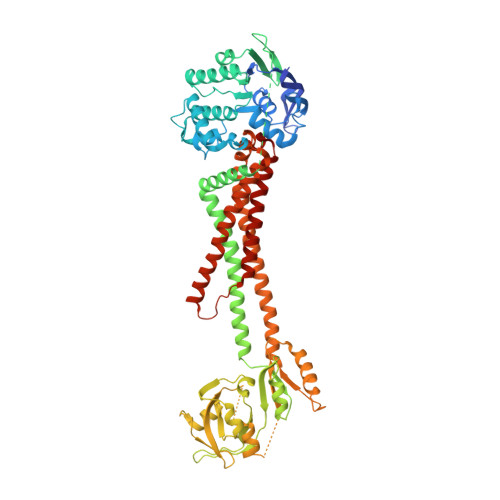Structure and mechanotransmission mechanism of the MacB ABC transporter superfamily.
Crow, A., Greene, N.P., Kaplan, E., Koronakis, V.(2017) Proc Natl Acad Sci U S A 114: 12572-12577
- PubMed: 29109272
- DOI: https://doi.org/10.1073/pnas.1712153114
- Primary Citation of Related Structures:
5LIL, 5LJ6, 5LJ7, 5LJ8, 5LJ9, 5LJA, 5NAA - PubMed Abstract:
MacB is an ABC transporter that collaborates with the MacA adaptor protein and TolC exit duct to drive efflux of antibiotics and enterotoxin STII out of the bacterial cell. Here we present the structure of ATP-bound MacB and reveal precise molecular details of its mechanism. The MacB transmembrane domain lacks a central cavity through which substrates could be passed, but instead conveys conformational changes from one side of the membrane to the other, a process we term mechanotransmission. Comparison of ATP-bound and nucleotide-free states reveals how reversible dimerization of the nucleotide binding domains drives opening and closing of the MacB periplasmic domains via concerted movements of the second transmembrane segment and major coupling helix. We propose that the assembled tripartite pump acts as a molecular bellows to propel substrates through the TolC exit duct, driven by MacB mechanotransmission. Homologs of MacB that do not form tripartite pumps, but share structural features underpinning mechanotransmission, include the LolCDE lipoprotein trafficking complex and FtsEX cell division signaling protein. The MacB architecture serves as the blueprint for understanding the structure and mechanism of an entire ABC transporter superfamily and the many diverse functions it supports.
- Department of Pathology, University of Cambridge, Cambridge CB2 1QP, United Kingdom.
Organizational Affiliation:


















